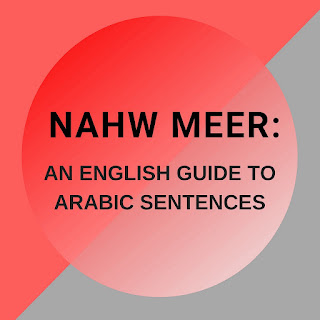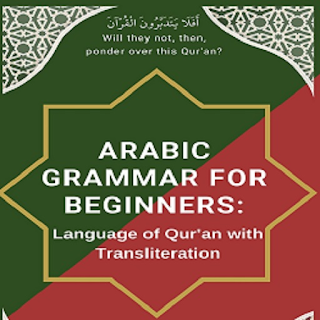7.0-7.3 - Verb Basics/Root Word/Definitions/Active Voice Past Tense
Section 7.0 - Verb فِعلٌ (fei-lun)
The verb is a word used to describe an action, state, or occurrence, and forming the main part of the predicate of a sentence, such as hear, become, or happen. The main element of a Verb is that it is associated with time.
In the English language, time is defined by what is called a tense, and in simple terms, these are three. Past Tense, Present Tense and Future Tense.
In this chapter, we will be covering Past tense الفِعلُ الْمَاضِيْ (al-feil-ul maa-di) only.
Imperfect tense الفِعلُ المُضَارِعُ (al-feil-ulmu-daa-ri-u) will be covered in a later chapter.
Before we start, you need to understand some important points and fundamentals.
Section 7.1 - Root Word
. Three Alphabet ثُلَاثِىْ مُجَرَّدٌ (thu-laathi mu-jarra-dun): Almost 99% of the Verbs in Arabic are based on three alphabet root words called ثُلَاثِىْ مُجَرَّدٌ thu-laathi mu-jarra-dun. We will be concentrating on the three-alphabet root word.
- Four-Alphabet رُبَاعِىْ (ru-baa-yee): Part of the remaining 1% are 4 alphabet root words. These small numbers of words have 4 root alphabets. Many of these are the same two alphabets repeated twice.
- Five-Alphabet خُمَاسِىْ (khu-maa-si): There is a very small number of Nouns which have 5 root alphabets. However, no Verbs have 5 root alphabets.
- Two-Alphabet: Officially there are no words with a two-alphabet root. But there are words with only two alphabets like أَبٌ (father) and أَخٌ (brother). According to linguists and historians, Arabs used two alphabet root words in the past extensively but transitioned into three alphabets and traces remain in a small number of two alphabet words.
What alphabets can form the root?
- Short vowels and the ة taa mar-boo-ta Never form part of the root
- Weak alphabets can form part of the root but are often missing or altered
- Besides, the following 10 alphabets are sometimes part of a pattern/form and not part of the root. The 3 weak alphabet ا (alif) ي, (yaa) و (waaw), the hamzah (ء) and these 6 alphabets ت س ل م ن هـ. These are used as additional alphabets for indicating Imperfect, future, emphasis etc.
Over time you will get better at separating the root from the pattern/form and it will become easier.
Section 7.2 – Important Definitions for Verbs and Root Words
1) Three Alphabet Root Word ثُلَاثِىْ مُجَرَّدٌ (thu-laa-thi mu-jar-rad): The three alphabets that are used as standard are (ف faa), (ع ayn) and (ل laam). An example of a three-alphabet root word is فَعَلَ (fa-ala).
2) Four رُبَاعِىْ (ru-baa-yee) and Five خُمَاسِىْ (kum-maa-si) Alphabet Root Words: There are very few of these and even fewer yet used in Al-Qur’an and will be handled as needed. An example for Four alphabet root word would be وَسْوَسَ (was-wasa) meaning whisper which is used in al-Qur’an in Surah an-Naas.
1) Inflections/forms تَصْرِيْفٌ (tas-ree-fun):
Next, as we studied in Noun, there are 14 different inflections or tas-reef of these alphabets with some additions to describe number (single, dual/plural) gender (masculine/ feminine and person doing the action (3rd person or absent /2ndperson or present/1st person or speaker).
2) Actor/Subject فَاعِلٌ (faa-ilun):
Fundamental understanding is that for every action, somebody is performing an action and is called an Actor/Subject (فَاعِلٌ faa-ilun). This is generally a universal truth that nothing happens unless without somebody/something is causing it. This is also is the basis of Islamic understanding that since the universe exists, there must be a Creator.
3) Target/Object مَفْعُوْلٌ (maf’ool-un):
Some sentences beg the question that if an Actor/Subject (فَاعِلٌ faa-ilun) is doing something (an action فِعلٌ fei-lun). then who is the recipient/target of the action مَفْعُوْلٌ maf’ool-un If the Verb does not require a (مَفْعُوْلٌ maf’ool-un), then it is called an intransitive Verb فِعلُ الَّازِمِ (feil-ul laa-zimi). If a (مَفْعُوْلٌ maf’ool-un) is required, then the Verb is called a transitive Verb فِعلُ الْمُتَعَدِّىْ (feil-ul mu-ta-ad-di).
4) Multiple Objects مَفْعُوْلٌ maf’ool-un:
A Verb can have multiple objects (مَفْعُوْلٌ maf’ool-un) and some Verbs generally may require more than one.
5) Active and Passive Voice Verbs:
Active Voice Verb الْفِعلُ الْمَعْروْفُ (al-feil-ul ma-a-roofu): an active voice is a type of a clause or sentence in which a subject performs an action and expresses it through its representative Verb. To simply put it, when a subject performs an action directly, it is in active voice. An example would be Hamid hit Mahmoud ضَرَبَ حَامِدٌ زَيْدًا(daraba hami-dun Zai-dan).
Passive Voice Verb الْفِعلُ الْمَجْهُوْلُ (al-feil-ul maj-hoolu): A passive voice is a type of a clause or sentence in which an action (through Verb) or an object of a sentence, is emphasized rather than its subject. Simply, the subject receives the action of the Verb. The emphasis or focus is on the action, while the subject is not known or is less important. An example would be Mahmoud was hit ضُرِبَ مَحْمُوْدٌ (du-riba mah-mud-un).
8) Universal Truths: For those situations where the act is universal and beyond the bounds of time, every language uses one tense to describe all three past, present, and future tenses. The English language uses the present tense to describe such situations such as the sentence God is merciful implies God was, is, and will be merciful. In the Arabic language, the past tense is used to describe universal truths. For example, in Arabic, the sentence كَانَ اللّٰهُ غَفُّوْرًا (kaan-al-lahu ghaf-foo-ran) would literally mean Allah was forgiving, but universal truth rule applies and this sentence means Allah was, is and will be forgiving.
Section 7.3 – Active Voice Past Tense الْفِعْلُ الْمَاضِىُ الْمَعْرُوْفُ
Three alphabet Root word ثُلَاثِي مُجَرَّدٌ (thula-thi mujar-ra-dun)
As we mentioned before, 99% of Arabic words are based on three alphabet root words. These are called ثُلَاثِىْ مُجَرَّدٌ (thulati mu-jar-radun) meaning three and mujar-rad meaning bare. Remaining 1% are 4 alphabet root words (رُبَاعِىْ rubaa-yee) and five alphabet root words (خُمَاسِىْ khu-maa-si). We will be concentrating on the three-alphabet root word.
The three alphabets that are used as standard are (ف faa) (عayn) and (ل laam). An example of a three-alphabet root word is فَعَلَ (fa-a-la). There are two other forms that are also very common and these are فَعِلَ (fa-eela) and فَعُلَ (fa-oola).
Next, let us study these forms and how they are used. This is probably the most important part of the book and the entire Ilm-us-Sarf (word morphology) is based on this.
In Arabic, each Verb is different depending upon whether the act is performed by male or female, single/dual or plural actors, and if the Actor/Subject is absent, present, or speaker. Technically, we should be getting 2x3x3 = 18 combinations. In Arabic, for speaker, dual/plural are the same, so the actual number of combinations is 14. Also, the dual Verb for in cases of absent/present and male/female are the same but are counted and written in the tas-reef. When these are used in a sentence, the context is what decides which ones these are.
Inflections of past tense with standard/ generic (ف) (ع) and (ل).
Table 33 – Meaning of فَعَلَ (fa-ala) Inflections
| Inflection number | Verb | Meaning | pronoun hidden in the Verb | |
| 1 | فَعَلَ
Fa-a-la | He did | هُوَ
hua | He |
| 2 | فَعَلَ
Fa-a-la | They both (males) did | هُمَا
hu-ma | They both (males) |
| 3 | فَعَلَ
Fa-a-la | They all (males) did | هُم
hum | They all (males) |
|
|
|
|
|
|
| 4 | فَعَلَتْ
Fa-a-lat | She did | هِيَ
Hee-ya | She |
| 5 | فَعَلَتْ
Fa-a-lat | They both (females) did | هُمَا
Hu-maa | They both (females) |
| 6 | فَعَلَتْ
Fa-a-lat | They all (females) did | هُمْ
hum | They all (females) |
|
|
|
|
|
|
| 7 | فَعَلْتَ
Fa-al-ta | You (male) did | اَنْتَ
un-ta | You (male) |
| 8 | فَعَلْتَ
Fa-al-ta | You both (males) did | اَنْتُمَا
An-tu- maa | You both (males) |
| 9 | فَعَلْتَ
Fa-al-ta | You all (males) did | اَنْتُمْ
un-tum | You all (males) |
|
|
|
|
|
|
| 10 | فَعَلْتِ
Fa-al-ti | You (female) did | اَنْتِ
un-tee | You (female) |
| 11 | فَعَلْتِ
Fa-al-ti | You both (females) did | اَنْتُمَا
un-tu- maa | You both (females) |
| 12 | فَعَلْتِ
Fa-al-ti | You all ( females) did | اَنْتُنَّ
un-tun- naa | You all (females) |
|
|
|
|
|
|
| 13 | فَعَلْتُ
Fa-al-tu | I (male and female) did | اَنَا
anaa | I (male and female) |
| 14 | فَعَلْنَ
Fa-al- naa ا | We (male/ female /dual/plural) did | نَحْنُ
Nah-nu | We (male/ female /dual/plural) |
The above Verb was based on the root word فَعَلَ. Similarly, we can do two more tables with root words فَعِلَ and فَعُلَ as shown below.
Table 34 – فَعِلَ (Fa-ee-la) Inflections
|
|
|
| single |
| dual |
| plural |
| Absent 3rd person | Male | 1 | فَعِلَ
Fa-i-la | 2 | فَعِلَا
Fa-i- laa | 3 | فَعِلُوْا
Fa-i- loo |
| Female | 4 | فَعِلَتْ
Fa-i-lat | 5 | فَعِلَتَا
Fa-ila- taa | 6 | فَعِلْنَ
Fa-il- na | |
| Present 2nd person | Male | 7 | فَعِلْتَ
Fa-il-ta | 8 | فَعِلْتُمَا
Fa-il- tu-maa | 9 | فَعِلْتُمْ
Fa-il- tum |
| female | 10 | فَعِلْتِ
Fa-il-ti | 11 | فَعِلْتُمَا
Fa-il- tu-maa | 12 | فَعِلْتُنَّ
fa-il- tun-na | |
| Speaker 1st person | Male/female | 13 | فَعِلْتُ
Fa-il-tu | 14 | فَعِلْنَا
Fa-il-naa | ||
Table 35 – فَعُلَ (Fa-oo-la) Inflections
|
|
|
| single |
| dual |
| plural |
| Absent 3rd person | Male | 1 | فَعُلَ
Fa-u-la | 2 | فَعُلَا
Fa-u- laa | 3 | فَعُلُوْا
Fa-ul- loo
|
| Female | 4 | فَعُلَتْ
Fa-u-lat | 5 | فَعُلَتَا
Fa-ula- taa | 6 | فَعُلْنَ
Fa-ul- na | |
| Present 2nd person | Male | 7 | فَعُلْتَ
Fa-ul-ta | 8 | فَعُلْتُمَا
Fa-ul- tu-maa | 9 | فَعُلْتُمْ
Fa-ul- tum |
| female | 10 | فَعُلْتِ
Fa-ul-ti | 11 | فَعُلْتُمَا
Fa-ul- tu-maa | 12 | فَعُلْتُنَّ
fa-ul- tun-na | |
| Speaker 1st person | Male/female | 13 | فَعُلْتُ
Fa-ul- tu | 14 | فَعُلْنَا
Fa-ul-naa | ||
Table 36 - Examples of Verbs that use فَعَلَ die
ضَرَبَ
Da-ra-ba | He hit |
خَلَقَ
Kha-la-qa | He created |
جَعَلَ
Ja-ala | He made |
غَفَرَ
Gh-fa-ra | He forgave |
حَشَرَ
Ha-sha-ra | He gathered |
عَبَدَ
Aba-da | He prayed |
رَفَعَ
Ra-fa-aa | He raised |
جَلَسَ
Ja-la-sa | He sat |
Table 37 - Examples of Verbs that use فَعِلَ die
| سَمِعَ
Sa-mi-aa | He listened |
| فَرِحَ
Fa-ri-ha | He became happy |
| قَبِلَ
Qa-bi-la | He accepted |
| حَمِدَ
Ha-mi-da | He praised |
| رَحِمَ
Ra-hi-ma | He showed mercy |
| حَسِبَ
Ha-si-ba | He assumed |
| حفِظَ
Ha-fi-za | He remembered |
| شَرِبَ
Sha-ri-ba | He drank |
| شَهِدَ
Sha-hi-da | He witnessed |
Table 38 - Examples of Verbs that use فَعُلَ die
| ثَقُلَ
Tha-qu-la | He became heavy |
| كَثُرَ
Ka-thu-ra | He became abundant |
| شَرُفَ
Sha-ru-fa | He became exalted |
| عَظُمَ
Azu-ma | He became great |
| صَعُبَ
Sa-u-ba | He became difficult |
| ثَقُلَ
Tha-qu-la | He became heavy |
| قَرُبَ
Qa-ru-ba | He became near |
| كَرُمَ
Ka-ru-ma | He was generous |
| ضَعُفَ
Da-u-fa | He became weak |
| بَعُدَ
Ba-u-da | He became distant |
***





Comments